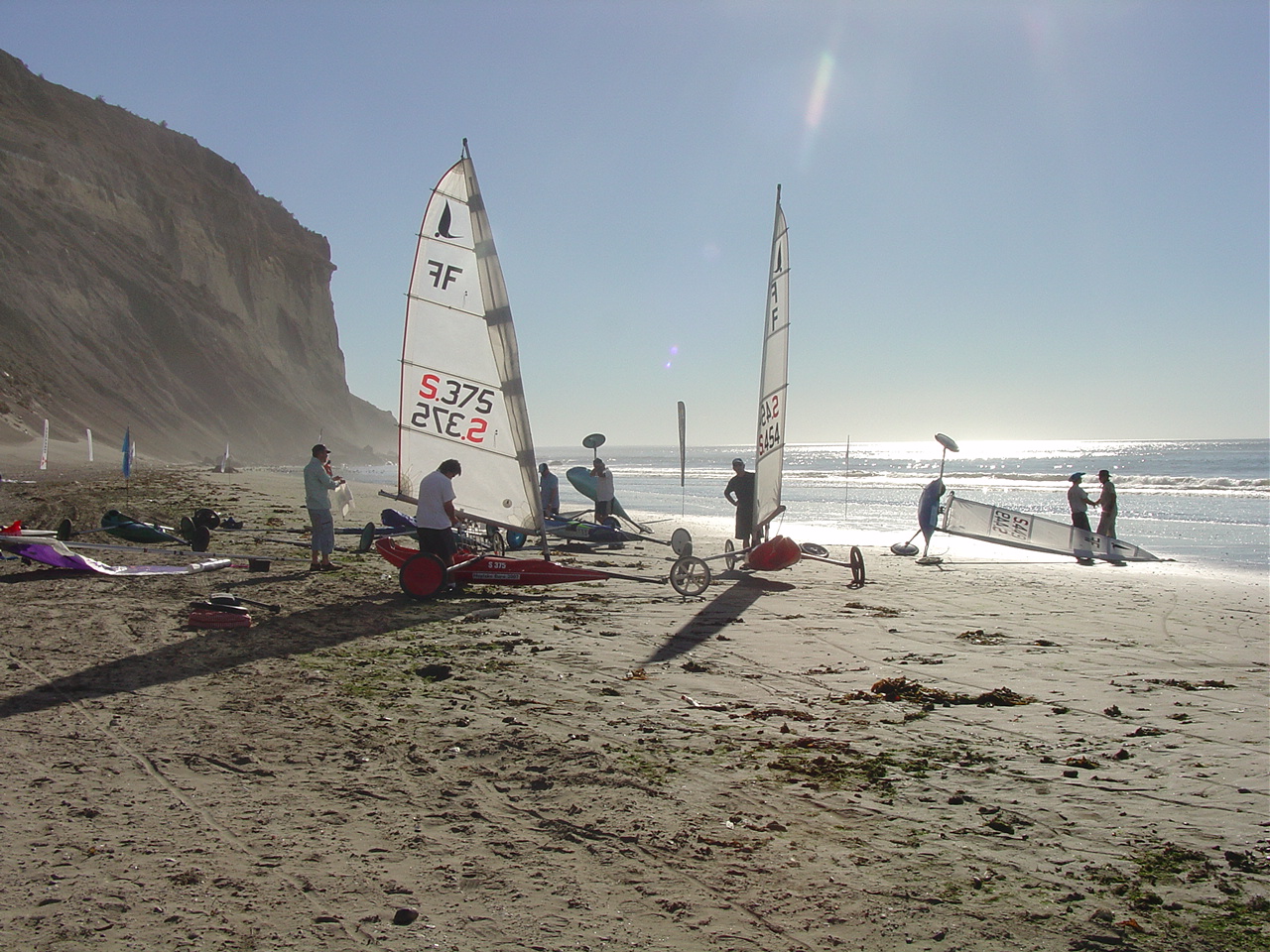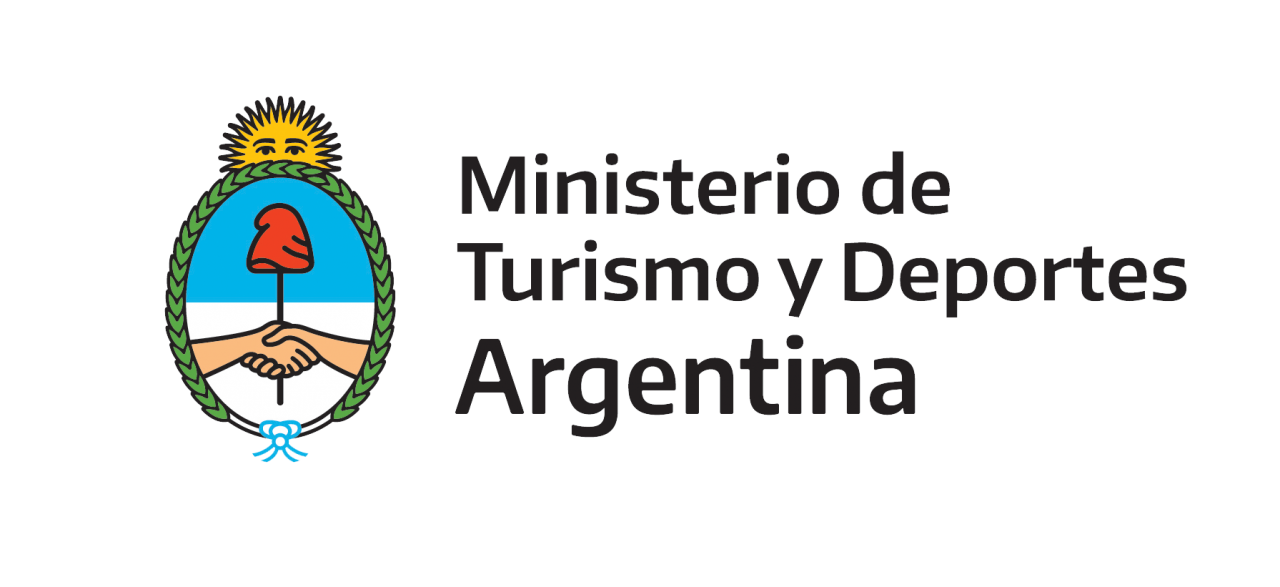Cultural and natural tourism in Chubut and Santa Cruz
Rocky scenes, crossed by rivers, lakes, streams, valleys, canyons, steppe and forest. The landscape is inhospitable, imposing, and the nature is virgin and extreme. Cave paintings, and remains of millions of years. Perhaps it is the greatest expression of the deep, infinite, untamed Patagonia. This circuit is ideal for intrepid travelers, those who move away from comfort to feel crossed by the nature and the immensity of the Patagonian landscape.
It is a journey that takes approximately six or seven days. It should be taken into account that due to the climatic characteristics and the state of the roads, it is suggested to do it only in spring – summer, check the condition of the vehicles and ensure the supply of fuel.
Entering “Comodoro Rivadavia” – the closest airport in the area – the first place to visit is the Sarmiento Petrified Forest, for which you will have to travel about 150 kms.
The Forest is located 30 km south of the city of Sarmiento and is accessed by gravel road. This provincial natural monument is a Cenozoic-era forest with an approximate age of 65 million years. These petrified trees, witnesses of Prehistory, form a landscape of indescribable beauty that has the hardness of rock, the color of the different geological strata and the heavy silence of respect for nature. Their petrified trunks are the result of the effect that these millions of years had on their wood. At the beginning of the Tertiary era, the Andes mountain range rose and thus prevented the passage of moisture from the Pacific. At the same time, there were eruptions the ash sediments of which spread and began a slow transformation process of these logs into stone.
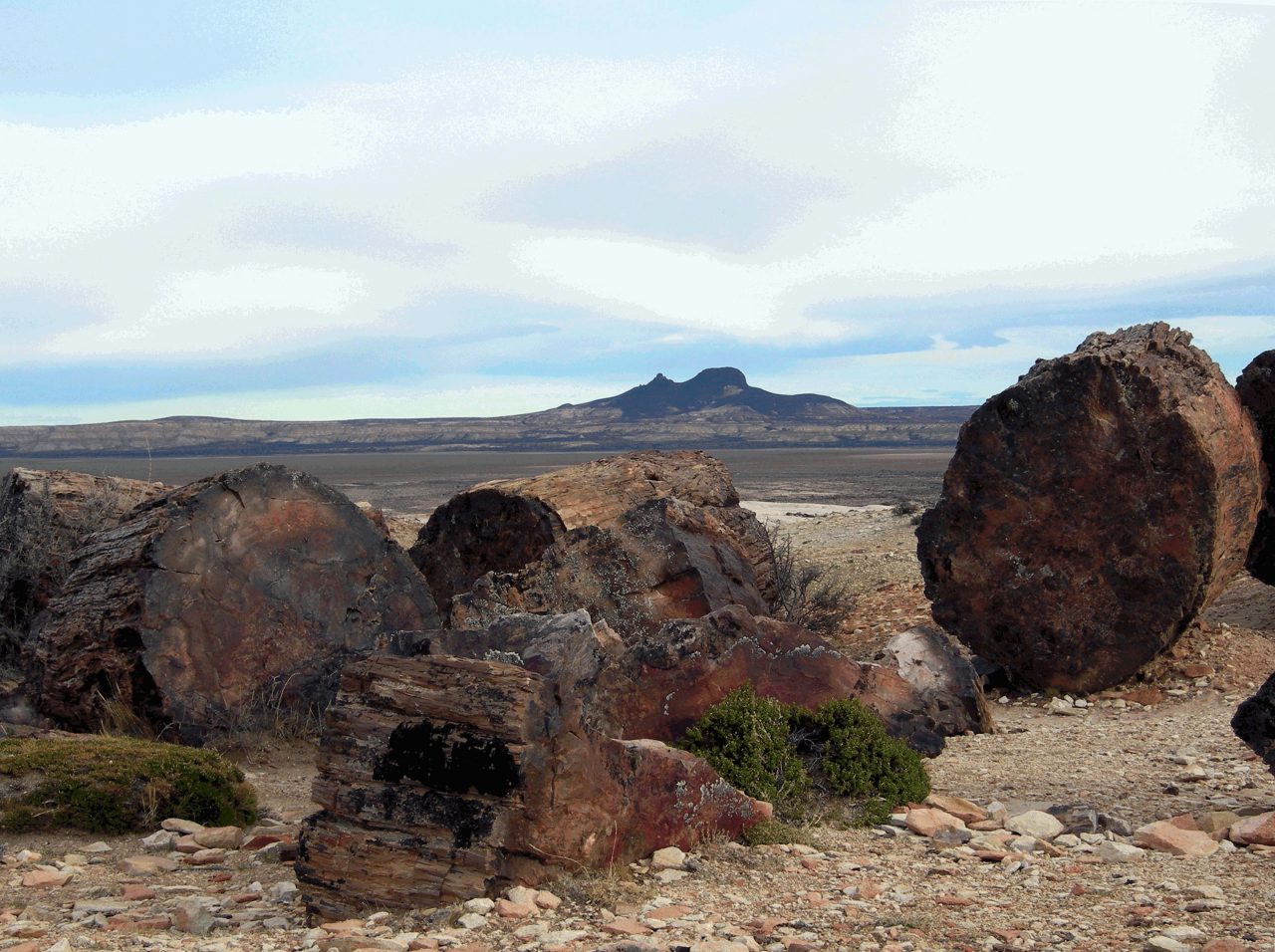
In the area it is also possible to visit the southernmost vineyard in the world. “Viñedo Fruto de Los Lagos” has an important fruit production, cherries, peaches, apricots and vines, which are produced under organic practices and sustainable procedures.
The tour continues through 100 kms to reach Río Mayo and visit the “Don José” Cattle Ranch, which is the place where all the activities of the GuenGuel Project take place. “Establecimiento Don José” is a Patagonian cattle ranch that allows you to be in contact with nature, sharing with your family and enjoying different rural activities, leisure activities or simply resting outdoors. Here, you will be able to know the scope of the GuenGuel venture, on the basis of the sustainable farming of guanaco for the production of special fine fibers from the Patagonia and the addition of the value chain to the design and fabric of their garments. In addition, you can visit the ORIZON Mineral Water plant of organic lands.
Leaving Chubut territory, the next destination is Los Antiguos, already in the province of Santa Cruz. Here fishing, family hikes and visits to productive orchards are part of the most attractive activities. This locality is the National Capital of Cherry, and the environment offers a natural spectacle when September begins and the cherry blossoms stain all the farms white.
Los Antiguos is a good starting point to get to know the Patagonia National Park. Very close to there is the “Portal La Ascensión”, one of the entrances to the protected area. It is recommended to take a walk along trails that allow you to go through different environments between the lake and the plateau, inviting you to imagine the transit of native peoples through that place in the past. Its natural viewpoints offer wide panoramas of the Andes Mountain Range and distant horizons of the Patagonian steppe.
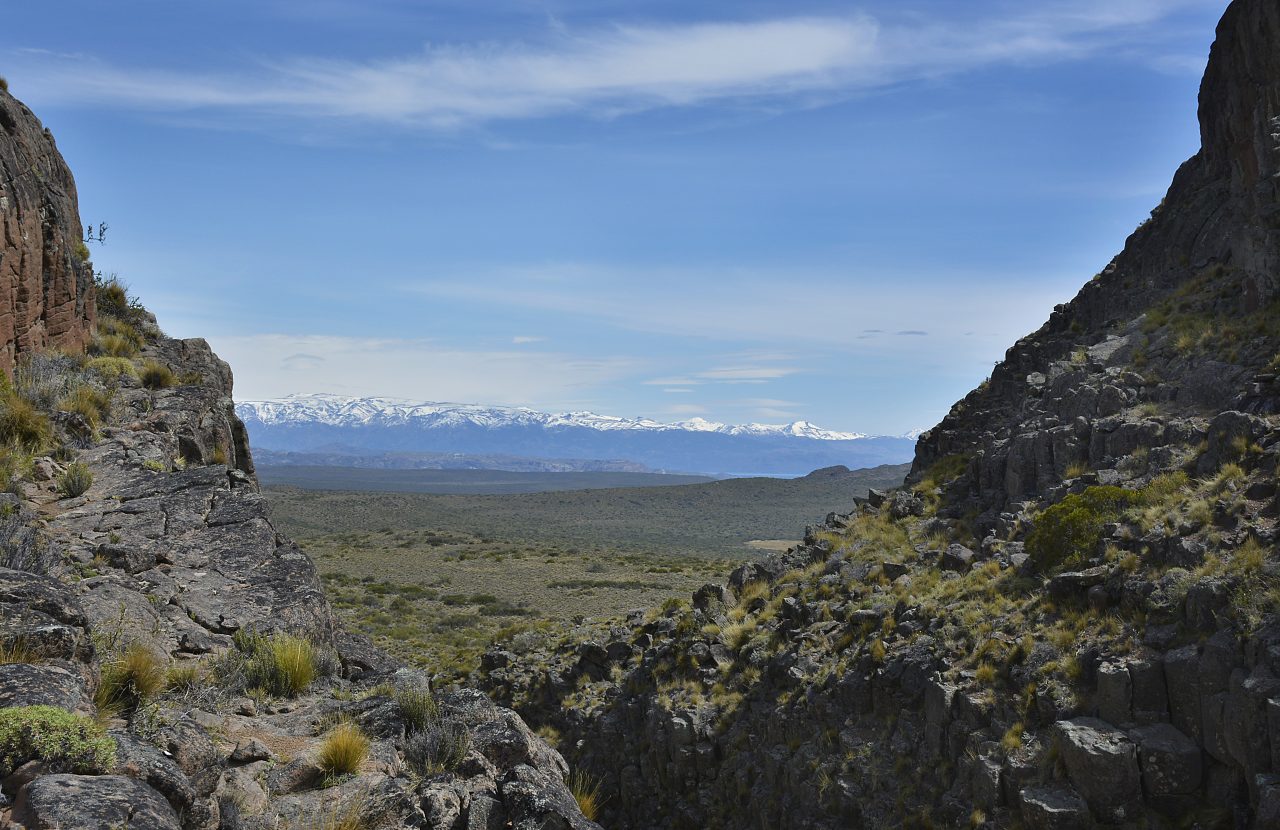
The next destination is Lago Posadas, where it is accessed after crossing 170 kms of one of the most impressive scenic roads in Patagonia, along Provincial Route 41, known as Monte Zeballos Road. This section can only be traveled in summer and is home of one of the most beautiful and varied landscapes in Patagonia. The starting point is the Buenos Aires Lake, about 200 meters above sea level. In the course of this path, the visitor will reach 1500 meters above sea level. That is precisely the main attraction, which will make them go from the steppe vegetation, to the forest (Monte Zeballos) and from the forest to a high mountain landscape. Finally, a great descent leads to the Columna, Posadas and Pueyrredón lakes and the locality of Lago Posadas. This attraction allows activities such as trekking, fishing, bird watching, landscape photography and the possibility of camping at the place.
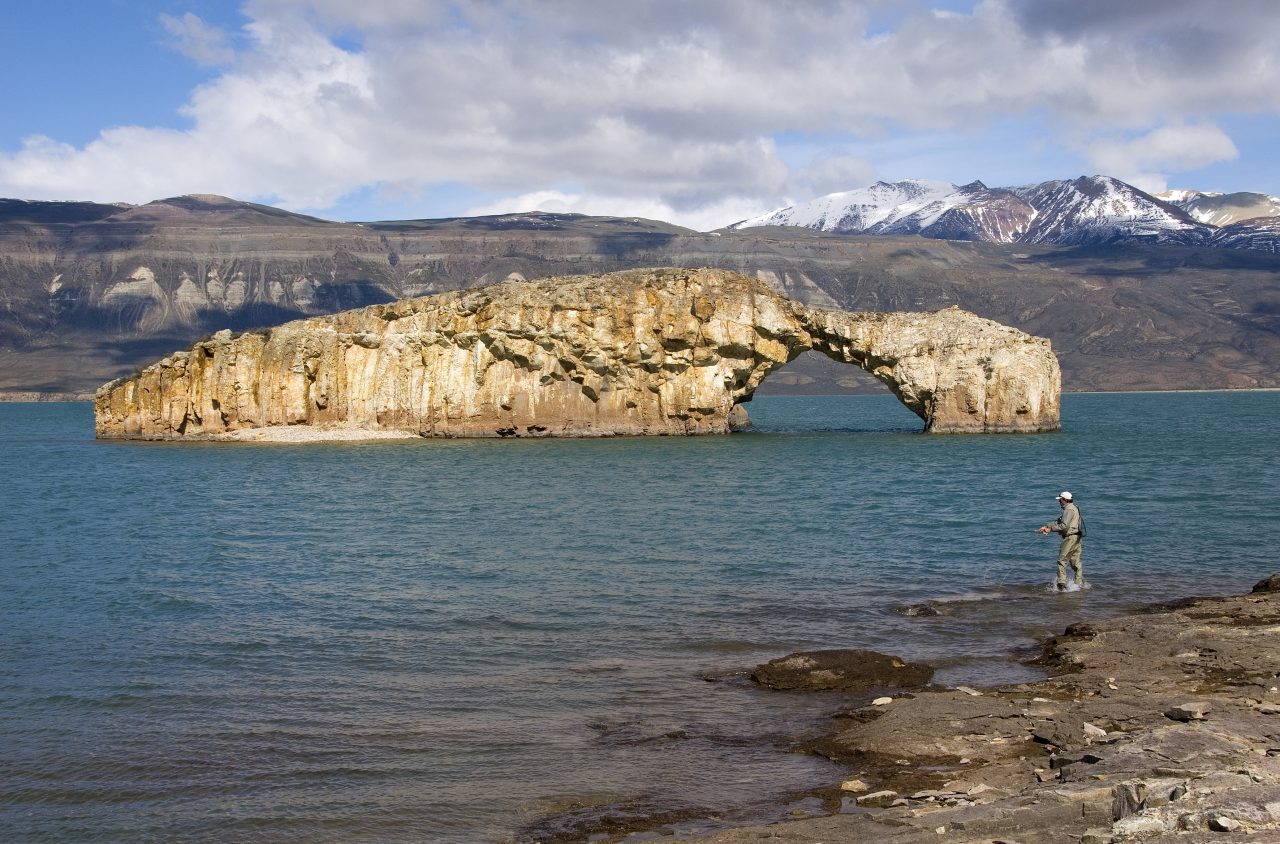
In addition to its attractive landscape, the Posadas Lake attracts a good number of sports fishing enthusiasts. In the waters of the two lakes (Posadas and Pueyrredón), in addition to those of the nearby Oro river, there are rainbow trout, brown trout, salmon, perch and Patagonian silverside. This is precisely the reason that makes the Posadas Lake area a paradise for fishermen seeking almost virgin destinations.
From Posadas Lake, it is suggested to visit one of the four World Heritage Sites that the Patagonian region has: the archaeological site “Cueva de las Manos”. The place invites you to learn about the prehistory of South America through this cave with 9,300-year-old cave paintings and to understand the dynamics of the first men, hunters and gatherers who inhabited Patagonia. Of all of them, the most famous and oldest are the positive and negative silhouettes of the hands (829 have been counted), overlapping in certain cases. Furthermore, animal silhouettes (mainly guanacos and choiques) can be observed. It is believed that they were the main components of the diet of the ancient peoples and therefore it was frequent that scenes of the collective hunting of these animals were shown.
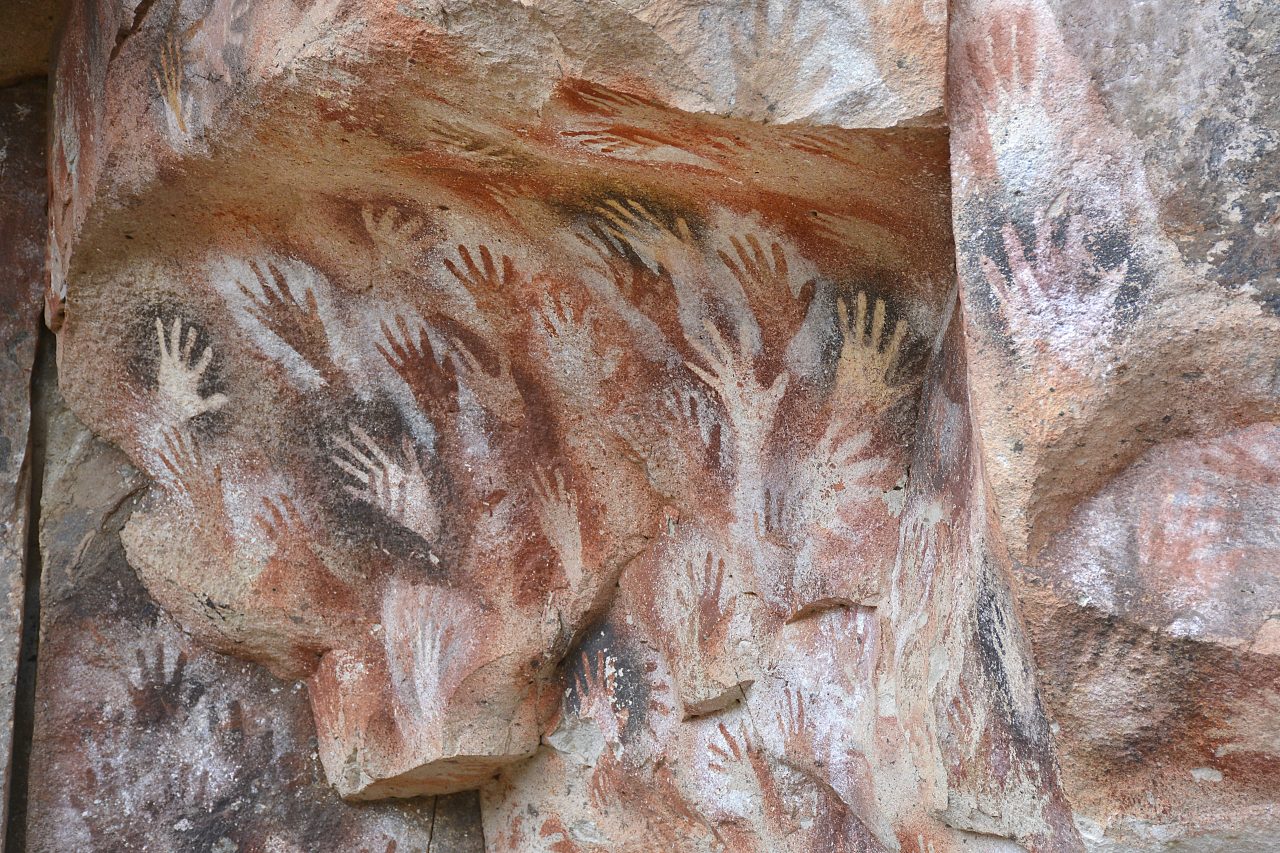
From there it is suggested to spend the night in the locality of Perito Moreno, to undertake on the next day an amazing excursion that can only be arranged with the Zoyen agency. It is about the visit to the “Alero Charcamata”, declared a National Historic Monument for its beauty and large number of paintings of around 7000 years. In this excursion, you travel all the time immersed in the Patagonian steppe along desolate roads, where the guanacos are the main protagonists of the majestic landscape, knowing the life of the field in situ, experiencing the history and the present of the cattle ranching of the area. The natural setting of the area, its canyons, the fording of the river, paintings, the landscape and the rock art intact and very far from civilization make time travel inevitable. Charcamata has an 80 meter mouth, 40 meters high and more than 20 meters deep. And inside, hundreds of hands, guanacos, pumas, choiques and geometric figures stamped on its walls by our ancestors thousands of years ago.
Finally, the tour goes back into the Province of Chubut, to get closer to the city of Comodoro Rivadavia, where this circuit had started. But before heading back, it is worth visiting the “Punta del Marqués” Nature Reserve and the small seaside resort of Rada Tilly from there. The Reserve protects a rookery of one-hair sea lions, with a population of between 400 to 1,500 wolves, depending on the time of year. The highest concentration occurs between the months of October and December. Rada Tilly, meanwhile, is characterized by its extensive and quiet beaches, where sand yachting is practiced, among other sports.
